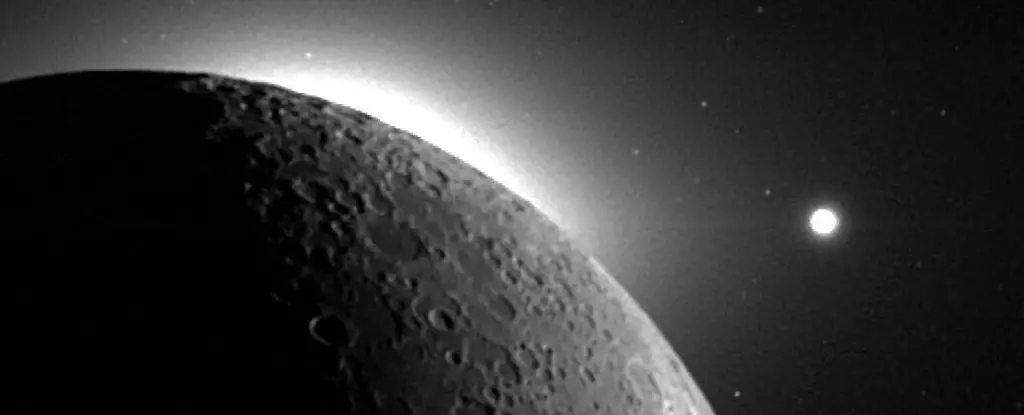When it comes to the celestial dynamics of our Solar System, the relationship between Earth and its Moon stands out as one of the most enthralling. Unlike gas giants adorned with an assortment of moons, or barren planets without a single satellite, the Earth-Moon duo showcases a remarkable symmetry in their mass ratio and gravitational dynamics. As scientists delve deeper into the origins of our planetary companion, they are faced with foundational questions regarding the formation and evolution of such unique relationships. The recognized theories suggest that the Moon is either a natural offspring of Earth or a sibling formed from the same primordial material, yet recent breakthroughs in lunar studies have begun to challenge these long-standing beliefs.
Traditionally, the prevailing explanation—the Giant Impact Hypothesis—claims that the Moon was born from the debris created when a Mars-sized body collided with the early Earth. This model aligns with the strikingly similar mineral compositions found on both bodies, linking them through shared materials. However, new research led by astronomers Darren Williams and Michael Zugger from Pennsylvania State University introduces a refreshing twist to our understanding of the Moon’s origins. They propose that the Moon might not have originated in close proximity to Earth at all but could have been gravitationally captured by our planet after forming elsewhere in the Solar System.
This theory opens up a fascinating discussion about how moons can be acquired, in stark contrast to the more common models of planetary formation. Interestingly, research in this new direction emphasizes the distinctions in how celestial bodies can interact and form complex relationships, reinforcing the notion that our understanding of lunar origins is still in its infancy.
The team at Penn State utilized complex mathematical modeling to sift through this captivating hypothesis. They analyzed the dynamics of gravitational interactions, specifically focusing on a framework known as binary capture—the process in which two gravitationally bound objects can snare a third. This scenario is not entirely whimsical; evidence suggests that similar events have occurred in other areas of the Solar System, as seen with Neptune’s moon Triton, whose unusual orbit hints at a complex cosmic history of gravitational attraction.
Williams and Zugger’s analysis indicates that Earth could have feasibly captured an object as large as the Moon, albeit with a less stable orbit initially. This notion not only reframes our previous understanding but also sparks curiosity about the intricate dance of gravitational forces that govern the lives of celestial bodies.
While the mathematical assessments lend credibility to the possibility of the Moon being an adopted child of Earth, significant questions remain. The impressive degree of similarity in isotopes and mineral compositions between Earth and its Moon suggests a more intimate relationship than a mere gravitational capture could allow. How do these apparent contradictions affect the plausibility of each theory? The ongoing analysis serves to illuminate the complexities inherent in celestial mechanics, revealing that while capture is an enticing explanation, the supporting evidence from our Moon’s composition speaks volumes about the potential of shared genesis.
Of course, the debate surrounding the Moon’s origins extends beyond academic curiosity. Understanding its formation and our relationship with it is vital for constructing broader models of planetary development across the universe, with implications for discovering habitable zones in distant systems.
As research continues to challenge the conventional narrative surrounding the Moon’s origin, the implications for our understanding of life’s evolution on Earth cannot be understated. The Moon’s gravitational influence has played a crucial role in stabilizing Earth’s axial tilt, which in turn has fostered a stable climate conducive to life. This unique relationship hints at the possible existence of similar planetary patterns around other stars, igniting our imagination about habitable worlds that may exist beyond our cosmic backyard.
In a world of constant scientific evolution and exploration, the revelation that we may possess two plausible origin stories for the Moon is invigorating. As Williams aptly states, “No one knows how the Moon was formed.” As we stand on the brink of renewed inquiry, the tantalizing prospect of discovering more about our lunar companion—and, by extension, the nature of planetary systems elsewhere—presents a realm ripe for exploration.
As we continue to scrutinize the complexities of the Earth-Moon system, our expanding understanding may very well redefine not only our view of the cosmos but also the very essence of what it means to be part of this universe.


Leave a Reply